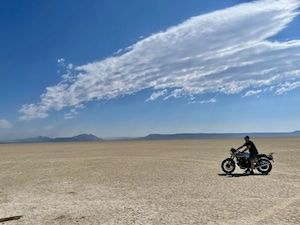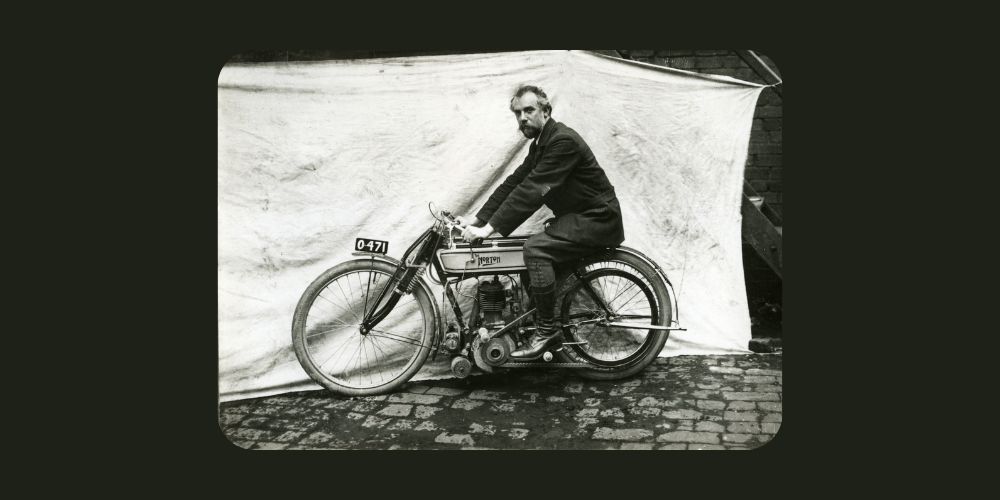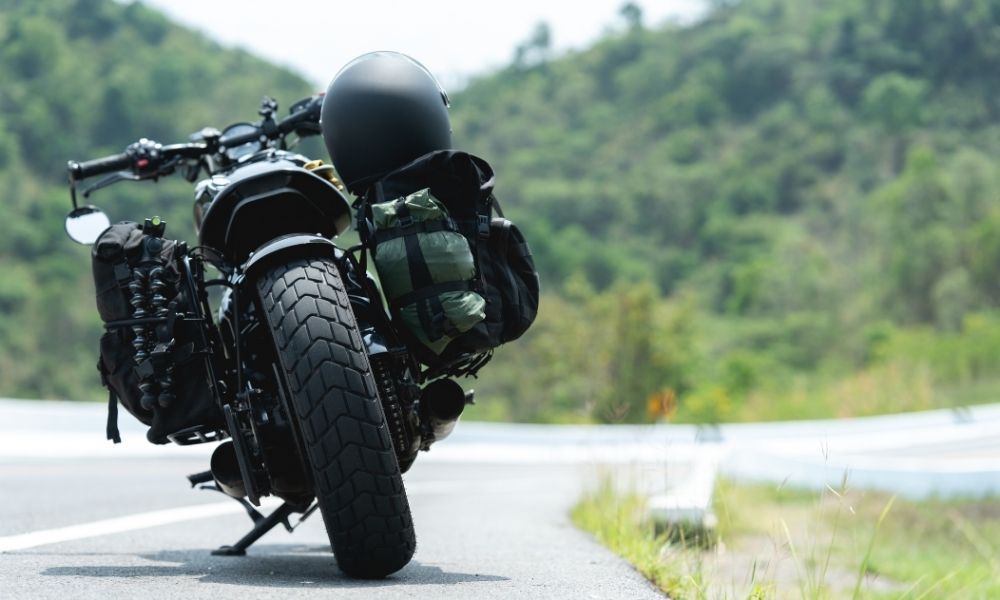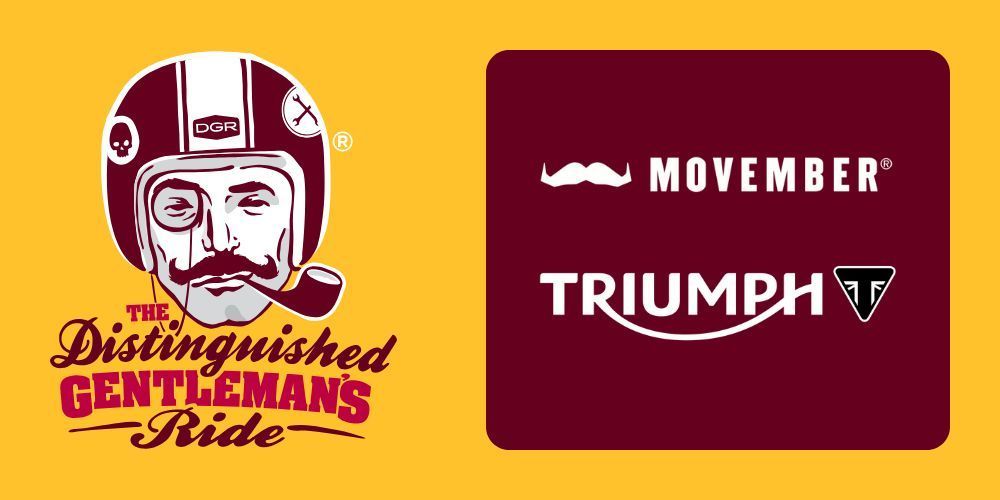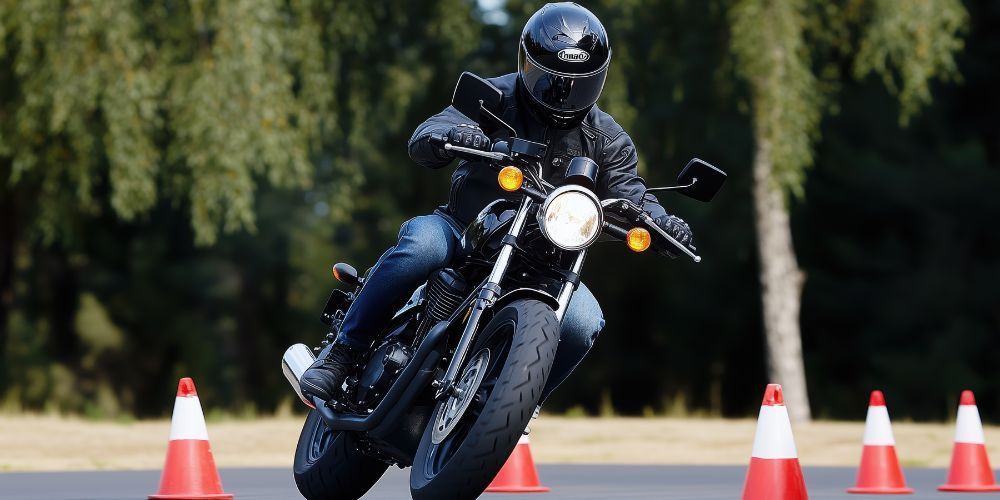The Untold Story of Spanish Motorcycles: How a Nation Forged Two-Wheeled Legends
Picture this: It's 1944, and while much of Europe is still rebuilding from the ashes of war, a small workshop in Barcelona is quietly revolutionizing the motorcycle world. The sound of hammering metal and the smell of engine oil fill the air as Francisco "Paco" Bultó sketches out plans for what would become one of Spain's most legendary motorcycles. This wasn't just another business venture—it was the birth of a movement that would see Spanish motorcycles conquer racetracks from the Scottish Highlands to the deserts of Morocco.
Spain's motorcycle story isn't just about machines; it's about passion, rebellion, and an almost obsessive pursuit of perfection that would ultimately challenge the dominance of British, Italian, and
German manufacturers. From the trials-conquering Montesa Cota to the enduro-destroying Bultaco Sherpa T, Spanish motorcycles carved out a unique identity that combined Mediterranean flair with uncompromising performance.

The Pioneers: When Spain Discovered Speed
Montesa: Born from Necessity, Built for Glory
The year was 1944, and Spain was isolated from much of the world. But isolation breeds innovation, and when Pedro Permanyer and Francisco Bultó founded Montesa in a small Barcelona workshop, they weren't just building motorcycles—they were building dreams.
The name itself tells a story: "Montesa" comes from the Catalan words meaning "mountain" and "ascent," perfectly capturing the brand's destiny to climb to the highest peaks of motorcycle excellence. Their early 125cc machines might have been modest, but they possessed something special—a combination of Mediterranean style and engineering precision that would soon catch the attention of riders worldwide.
The Montesa Impala arrived in 1962 like a revelation. This wasn't just another small-displacement bike; it was a statement. With its distinctive fuel tank, elegant lines, and surprisingly robust performance, the Impala became the motorcycle that put Spanish engineering on the global map. Young riders across Europe coveted its blend of style and substance, while seasoned enthusiasts respected its build quality.
But Montesa's true calling lay off-road. The Montesa Cota series, launched in 1968, would redefine what a trials bike could be. These machines weren't just motorcycles; they were precision instruments designed to dance across impossible terrain. The Cota 25, with its revolutionary lightweight frame and nimble handling, became the weapon of choice for trials legends like Yrjö Vesterinen, who rode it to multiple world championships.
Bultaco: When Passion Meets Rebellion
No story of Spanish motorcycles would be complete without Francisco "Paco" Bultó's dramatic exit from Montesa in 1958. The disagreement wasn't about money or power—it was about vision. Bultó believed motorcycles should race, should push boundaries, should embody the spirit of competition. When Montesa's board disagreed, Bultó walked away and founded Bultaco, taking with him not just his expertise, but his burning passion for speed.
The name "Bultaco" was genius in its simplicity—a combination of "Bultó" and "Company" (in Spanish, "y Compañía"). But there was nothing simple about the motorcycles that emerged from the Bultaco factory in Sant Adrià de Besòs.
The Bultaco Sherpa T wasn't just a motorcycle; it was a revolution on two wheels. When it debuted in the early 1960s, it rendered the heavy four-stroke British trials bikes almost obsolete overnight. Weighing barely 200 pounds and featuring a peaky but controllable two-stroke engine, the Sherpa T could climb vertical walls and hop over obstacles that would stop other bikes cold.
Sammy Miller, the British trials legend, was so impressed with the Sherpa T that he convinced Bultaco to hire him as a development rider. His input transformed an already excellent motorcycle into a trials weapon that would dominate competitions throughout the 1960s and 1970s. Miller's signature orange and white Sherpa Ts became as iconic as the man himself.
The Bultaco Pursang took the company's racing philosophy to the motocross tracks. These weren't just dirt bikes; they were purpose-built racing machines that challenged the established order. The Pursang's distinctive tank shape, radical suspension, and screaming two-stroke engines made them the choice of privateer racers and factory teams alike.
Derbi: From Bicycles to Brilliance
While Montesa and Bultaco battled for supremacy in the larger displacement classes, Simeón Rabasa Singla was quietly building something special in Mollet del Vallès. Derbi (originally "Derivados de Bicicletas" - Bicycle Derivatives) started in 1922 as a bicycle company, but by the 1950s, Rabasa had set his sights on motorcycles.
Derbi's approach was different. Where other manufacturers chased power and prestige, Derbi focused on precision and reliability in the smaller displacement classes. Their 50cc and 125cc motorcycles became the training ground for an entire generation of Spanish riders, while their racing bikes dominated Grand Prix circuits in the smaller classes.
The Derbi Antorcha series of the 1960s proved that small displacement didn't mean small ambitions. These elegant motorcycles combined Italian styling cues with Spanish engineering integrity, creating machines that were as beautiful as they were functional.

The Golden Age: When Spanish Bikes Ruled the World
The Racing Revolution
The 1960s and 1970s represented the golden age of Spanish motorcycles, and nowhere was this more evident than on the world's racetracks. Spanish manufacturers understood something their competitors had missed: racing success breeds commercial success.
Montesa's trials dominance began with riders like Don Smith and Malcolm Rathmell, but reached its zenith with Yrjö Vesterinen's incredible run of world championships on the Cota series. Vesterinen's riding style—smooth, calculated, almost balletic—perfectly matched the Cota's character. Together, they redefined what was possible on two wheels.
Bultaco's motocross success was equally impressive. The Pursang became the bike of choice for privateer racers who couldn't afford factory support but refused to accept defeat. Its combination of light weight, punchy power delivery, and bulletproof reliability made it competitive against bikes costing twice as much.
But perhaps most remarkable was Derbi's Grand Prix dominance in the 50cc and 125cc classes. Riders like Ángel Nieto and Eugenio Lazzarini piloted screaming Derbi racers to multiple world championships, proving that Spanish engineering could compete with the best the world had to offer.
The Ossa Story: Innovation Born from Adversity
While the "big three" of Spanish motorcycles were making headlines, another company was quietly pushing the boundaries of two-stroke technology. Ossa, founded by Manuel Giró in 1924, had been building bicycles and small motorcycles for decades, but the arrival of the swinging sixties brought new opportunities.
The Ossa Stiletto of 1963 was a revelation. This 250cc street bike featured advanced two-stroke technology that delivered more power per pound than anything else in its class. But Ossa's real genius lay in their trials and enduro machines.
The Ossa MAR (named after Manuel Giro's son) introduced in 1967, featured revolutionary engineering solutions that wouldn't become commonplace until decades later. Its monocoque frame construction and advanced suspension design made it incredibly light and rigid, perfect for the demanding world of observed trials.
The Technical Revolution
Spanish motorcycles weren't just successful because of passionate marketing or charismatic founders—they succeeded because Spanish engineers were genuinely innovative. Several key technological advances originated in Spanish factories:
- Reed Valve Technology: Bultaco pioneered the use of reed valves in motorcycle engines, dramatically improving power delivery and fuel economy in two-stroke engines.
- Monocoque Frame Construction: Ossa's MAR introduced monocoque (single-shell) frame construction to motorcycles, a technique borrowed from aircraft manufacturing that provided incredible strength-to-weight ratios.
- Torque Induction Systems: Derbi developed sophisticated torque induction systems for their racing engines, extracting incredible power from tiny displacements.
- Suspension Innovation: Montesa's work with progressive suspension systems influenced motorcycle suspension design for decades.
The Decline: When the World Changed
The Japanese Invasion
By the late 1970s, the motorcycle world was changing rapidly. Japanese manufacturers like Honda, Yamaha, Suzuki, and Kawasaki were producing motorcycles with unprecedented reliability, sophisticated four-stroke engines, and increasingly competitive prices. For Spanish manufacturers who had built their reputations on quirky, specialized machines, this posed an existential threat.
The writing was on the wall when Honda approached Montesa about a partnership. While the collaboration would eventually prove beneficial, it signaled the end of Spain's independence in motorcycle manufacturing. The age of the small, passionate manufacturer was giving way to global corporations with vast resources and economies of scale.
Bultaco's Financial Struggles: Despite their racing success and cult following, Bultaco struggled financially throughout the 1970s. Industrial strikes, economic uncertainty in Spain, and increasing competition from Japanese manufacturers created a perfect storm. Production ceased in 1983, ending one of motorcycling's most romantic stories.
Ossa's Premature End: Ossa faced similar challenges and ceased motorcycle production in 1982, though the company had been struggling since the mid-1970s. Their innovative designs couldn't overcome the commercial realities of a changing marketplace.
The End of an Era
By 1985, the golden age of Spanish motorcycles was effectively over. Montesa survived through its Honda partnership, while Derbi would eventually be acquired by Piaggio. But the independent, passionate era of Spanish motorcycle manufacturing—the era that had produced some of the most innovative and exciting motorcycles ever built—had come to an end.
The Cultural Legacy: More Than Just Machines
The Spanish Motorcycle Aesthetic
Spanish motorcycles developed a distinctive aesthetic that combined functionality with Mediterranean flair. Unlike the utilitarian approach of some manufacturers or the ornate styling of others, Spanish bikes possessed an elegant simplicity that made them instantly recognizable.
Color Schemes: Bultaco's iconic orange, Montesa's red and white, and Ossa's yellow became as much a part of their identity as their mechanical innovations. These weren't just paint jobs; they were statements of national pride and artistic sensibility.
Design Philosophy: Spanish motorcycles prioritized rider connection over raw power. They were designed to be extensions of the rider's body, responsive and intuitive rather than simply fast or powerful.
The Enthusiast Community
Spanish motorcycles cultivated perhaps the most passionate enthusiast community in motorcycling. Even today, decades after production ended, Bultaco, Montesa, and Ossa owners form tight-knit communities dedicated to preserving and celebrating these machines.
The Vintage Trials Revival: Modern vintage trials events are dominated by Spanish motorcycles, particularly Montesa Cotas and Bultaco Sherpa Ts. These events aren't just competitions; they're celebrations of a golden age when motorcycles were art as much as transportation.
Restoration Culture: The restoration of Spanish motorcycles has become an art form in itself. Specialists around the world dedicate their lives to returning these machines to their original glory, preserving not just the motorcycles but the craftsmanship and attention to detail that created them.

The Modern Revival: New Legends from Ancient Soil
GasGas: The Phoenix Rises
Just when it seemed Spanish motorcycle manufacturing was finished forever, a new name emerged from Catalonia: GasGas. Founded in 1985 by Narcís Casas and Josep Pibernat, GasGas proved that the Spanish passion for motorcycles was far from dead.
GasGas focused on what Spanish manufacturers had always done best: specialized, high-performance machines for demanding applications. Their trials and enduro bikes quickly gained a reputation for innovation and quality that echoed the glory days of Bultaco and Montesa.
The GasGas TXT Series became the weapon of choice for modern trials riders, combining cutting-edge technology with the intuitive handling characteristics that had made Spanish bikes legendary. When Toni Bou began his unprecedented run of world trials championships on GasGas machinery, it felt like history repeating itself.
Rieju: Keeping the Flame Alive
Rieju, founded in 1934 but revitalized in the modern era, represents another strand of Spanish motorcycle DNA. Their focus on smaller displacement machines and innovative design solutions echoes the approach that made Derbi successful in earlier decades.
Modern Technology, Spanish Soul: Today's Rieju motorcycles feature cutting-edge technology like fuel injection, modern suspension systems, and sophisticated electronics. But they retain the characteristic Spanish attention to detail and rider-focused design philosophy that made their predecessors special.
The KTM Connection: Spanish Expertise Goes Global
When KTM acquired GasGas in 2019, it wasn't just buying a brand—it was gaining access to decades of Spanish expertise in trials and enduro motorcycle development. The integration of GasGas technology and philosophy into KTM's global operation represents a new chapter in Spanish motorcycle influence.
This isn't a story of Spanish motorcycles being absorbed by a larger entity; it's Spanish innovation finding a global platform to influence motorcycle development worldwide.
Legends That Live On: The Myths vs. The Facts
The Bultaco Naming Myth
The Legend: Some enthusiasts claim "Bultaco" is derived from a Catalan word meaning "to jump" or "to leap," referencing the bikes' trials capabilities.
The Reality: "Bultaco" is simply a contraction of "Bultó y Compañía" (Bultó and Company). While less romantic than the jumping legend, it reflects Francisco Bultó's straightforward approach to business and engineering.
The Sherpa T Weight Controversy
The Claim: Some sources claim the Bultaco Sherpa T weighed as little as 175 pounds.
The Truth: While exceptionally light for its era, the Sherpa T typically weighed around 200-210 pounds depending on the specific model and year. Still remarkably light, but not quite as featherweight as some legends suggest.
Montesa's Honda "Buyout"
The Myth: Honda "bought out" Montesa and destroyed its independence.
The Reality: The 1986 Honda-Montesa partnership was more of a joint venture that actually saved Montesa from bankruptcy while allowing them to continue developing specialized trials and enduro machines. Many of the most successful Montesa models were produced during this partnership.
Technical Innovations That Changed Everything
The Reed Valve Revolution
What it was: Reed valves are one-way valves that control the flow of the fuel-air mixture into the engine's combustion chamber.
Why it mattered: Bultaco's application of reed valve technology to motorcycle engines dramatically improved power delivery, especially at low RPMs. This made their trials bikes incredibly controllable while maintaining strong power output.
Legacy: Reed valves became standard on virtually all high-performance two-stroke motorcycles and remain crucial technology today.
Monocoque Frame Construction
The Innovation: Ossa's MAR featured a monocoque (single-shell) frame that combined the fuel tank, air box, and structural elements into one integrated unit.
The Advantage: This construction method provided exceptional rigidity while saving weight—crucial factors in trials competition.
Modern Application: Monocoque construction principles influence modern motorcycle chassis design, particularly in racing applications.
Progressive Suspension Systems
Montesa's Contribution: Montesa developed progressive suspension systems that provided different spring rates throughout the suspension travel.
The Benefit: This allowed their trials bikes to be soft and compliant over small obstacles while firming up for larger impacts.
Today's Legacy: Progressive suspension is now standard on virtually all modern motorcycles, from sportbikes to adventure touring machines.
The Collector's Perspective: What Makes Spanish Motorcycles Special
Rarity and Desirability
Spanish motorcycles occupy a unique position in the collector market. They're rare enough to be special but not so exotic as to be unobtainable for passionate enthusiasts.
Bultaco Values: A restored Bultaco Sherpa T can command $8,000-$15,000 depending on condition and rarity, while a Pursang in racing trim might bring $10,000-$20,000.
Montesa Pricing: Montesa Cotas vary widely in value, from $3,000 for a rider-grade machine to $12,000+ for a pristine, original example.
Ossa Premiums: Ossa motorcycles often command premium prices due to their rarity and innovative engineering, with MAR models bringing $8,000-$18,000.
Restoration Challenges and Rewards
Restoring Spanish motorcycles presents unique challenges:
- Parts Availability: While some parts are still available through specialized suppliers, many components must be fabricated or sourced from parts bikes.
- Technical Expertise: Spanish motorcycles often featured unique engineering solutions that require specialized knowledge to properly restore and maintain.
- Documentation: Original service manuals and parts catalogs are increasingly rare and valuable in their own right.
But the rewards are substantial:
- Unique Character: Restored Spanish motorcycles possess a character and charisma that's increasingly rare in modern machines.
- Historical Significance: These motorcycles represent important chapters in motorcycling history and engineering development.
- Community: The Spanish motorcycle community is among the most welcoming and knowledgeable in all of motorcycling.

The Future: Spanish DNA in Modern Machines
Continuing Influence
While the golden age of independent Spanish motorcycle manufacturing may be over, Spanish influence on modern motorcycles continues through various channels:
- Design Philosophy: The Spanish emphasis on rider connection and intuitive handling continues to influence modern motorcycle design.
- Technical Innovation: Many modern suspension and engine management systems trace their lineage back to innovations first developed by Spanish manufacturers.
- Racing Heritage: Modern trials and enduro competitions are still dominated by motorcycles that embody principles first established by Montesa, Bultaco, and their contemporaries.
New Opportunities
Recent developments suggest Spanish motorcycle manufacturing may not be finished:
- Electric Innovation: Several Spanish companies are developing electric motorcycles and scooters, bringing 21st-century technology to the traditional Spanish emphasis on urban mobility.
- Boutique Manufacturing: Small-scale, specialized manufacturers continue to emerge in Spain, focusing on limited production, high-quality machines that echo the country's motorcycling heritage.
- Component Specialization: Spanish companies remain leaders in specialized motorcycle components, particularly in suspension and engine management systems.
More Than Machines, They Were Dreams
The story of Spanish motorcycles is ultimately a human story—a tale of passionate individuals who refused to accept that motorcycles had to be purely utilitarian or excessively complex. From Francisco Bultó's dramatic walkout from Montesa to Yrjö Vesterinen's balletic performances on a Montesa Cota, these weren't just business ventures or sporting achievements. They were expressions of a uniquely Spanish approach to engineering and life.
Spanish motorcycles proved that innovation doesn't require massive resources—it requires passion, creativity, and an unwillingness to accept conventional limitations. In their brief but brilliant heyday, Spanish manufacturers created motorcycles that were more than the sum of their parts, machines that connected with their riders on an almost emotional level.
Today, when modern motorcycles often feel sanitized and homogenized, the Spanish motorcycle legacy reminds us that the best machines aren't necessarily the most powerful or sophisticated—they're the ones that make us feel most alive. Whether it's the precise feedback of a Montesa Cota climbing an impossible slope, the angry bark of a Bultaco Pursang launching over a jump, or the sophisticated engineering of an Ossa MAR threading through a trials section, Spanish motorcycles embodied the pure joy of riding.
That legacy lives on in every modern trials bike that dances through a section, every enduro machine that conquers impossible terrain, and every motorcycle that prioritizes rider connection over raw statistics. The Spanish motorcycle revolution may have ended, but its influence will be felt as long as people dream of freedom on two wheels.
In the end, Spanish motorcycles weren't just about getting from point A to point B—they were about the journey, the experience, and the pure, undiluted joy of riding. They reminded us that motorcycles aren't just machines; they're dreams made manifest in steel, aluminum, and gasoline. And dreams, as we all know, never truly die.
Key Takeaways
- Spanish motorcycle manufacturers like Montesa, Bultaco, Derbi, and Ossa revolutionized motorcycle design between 1940-1980
- Racing success, particularly in trials and motocross, drove global recognition and commercial success
- Technical innovations including reed valves, monocoque construction, and progressive suspension originated in Spanish factories
- The Japanese invasion of the late 1970s effectively ended the independent Spanish motorcycle era
- Modern brands like GasGas continue the Spanish tradition of specialized, high-performance machines
- Spanish motorcycles command strong collector interest due to their rarity, innovation, and emotional appeal
- The Spanish emphasis on rider connection and intuitive handling continues to influence modern motorcycle design
What were the most famous Spanish motorcycle brands?
The "Big Four" Spanish motorcycle manufacturers were Montesa, Bultaco, Derbi, and Ossa. Montesa became legendary for their Cota trials bikes, Bultaco dominated with the Sherpa T and Pursang models, Derbi excelled in small-displacement racing, and Ossa pioneered innovative engineering with bikes like the MAR. Each brand developed a distinctive character and specialized in different aspects of motorcycling.
Why did Spanish motorcycle manufacturers decline in the 1980s?
Spanish motorcycle manufacturers faced a perfect storm of challenges in the late 1970s and early 1980s. The primary factors included the Japanese motorcycle invasion (Honda, Yamaha, Suzuki, and Kawasaki offered better reliability and value), economic instability in Spain, labor strikes, and limited financial resources compared to global corporations. Most Spanish brands were small, passionate companies that couldn't compete with the economies of scale offered by Japanese manufacturers.
What made Spanish motorcycles technically innovative?
Spanish manufacturers pioneered several key technologies that became industry standards: reed valve systems (developed by Bultaco) that improved two-stroke engine performance, monocoque frame construction (introduced by Ossa) that provided exceptional strength-to-weight ratios, progressive suspension systems (perfected by Montesa) that adapted to different terrain conditions, and advanced torque induction systems (developed by Derbi) for racing engines.
Are Spanish motorcycles still being manufactured today?
Yes, but in different forms. GasGas continues the Spanish tradition of specialized trials and enduro motorcycles (now owned by KTM), while Rieju produces modern motorcycles with Spanish engineering heritage. Many Spanish companies also manufacture specialized components and electric vehicles. Additionally, the Honda-Montesa partnership continues to produce trials bikes that carry forward the Montesa legacy.
What are Spanish motorcycles worth to collectors today?
Values vary significantly based on model, condition, and rarity. Bultaco Sherpa Ts typically range from $8,000-$15,000 for restored examples, Montesa Cotas from $3,000-$12,000 depending on condition, and rare Ossa MARs can command $8,000-$18,000. Factors affecting value include originality, restoration quality, racing provenance, and documentation. The passionate collector community helps maintain strong values for quality examples.
Which Spanish motorcycle had the biggest impact on the industry?
The Bultaco Sherpa T arguably had the most transformative impact. Introduced in the early 1960s, it revolutionized trials riding by making heavy four-stroke British bikes obsolete almost overnight. Weighing around 200 pounds with exceptional handling, it redefined what was possible in observed trials and influenced motorcycle design philosophy for decades. Its success helped establish the template for modern trials bikes.
About the Author
William Flaiz, passionate about European motorcycle brands, shares his expertise and stories on RunMotorun.com. He offers detailed insights and reviews, aiming to educate both seasoned enthusiasts and newcomers. Flaiz combines personal experience with thorough research, welcoming visitors to explore the rich world of European motorcycles alongside him.

